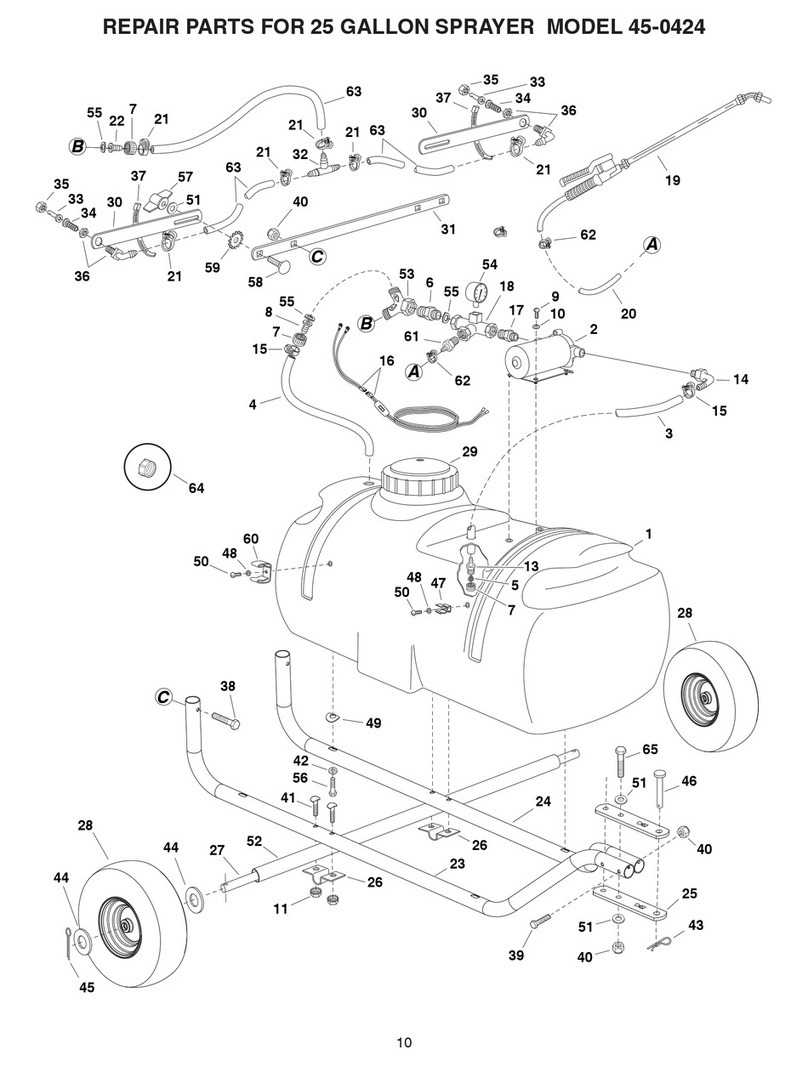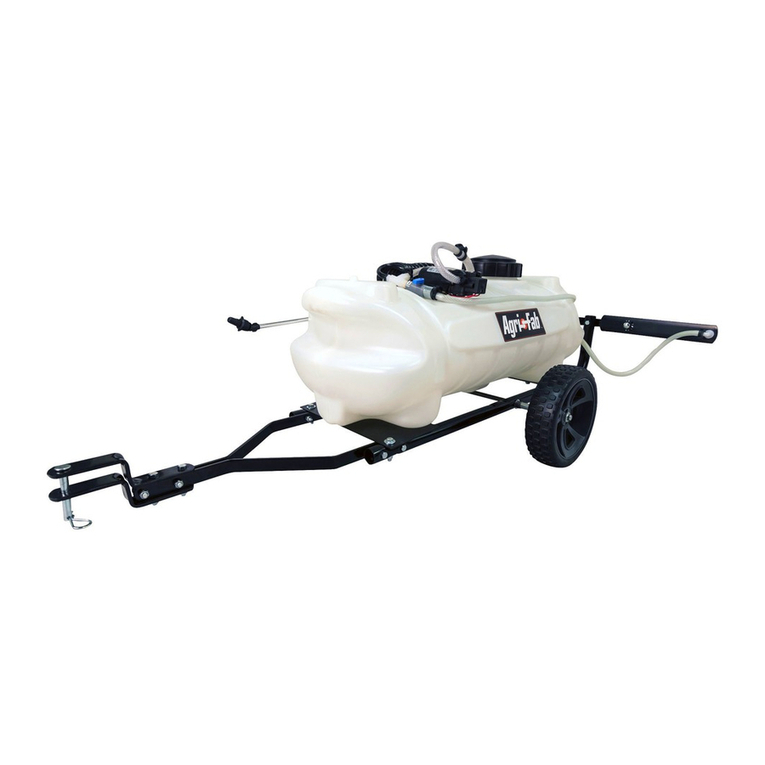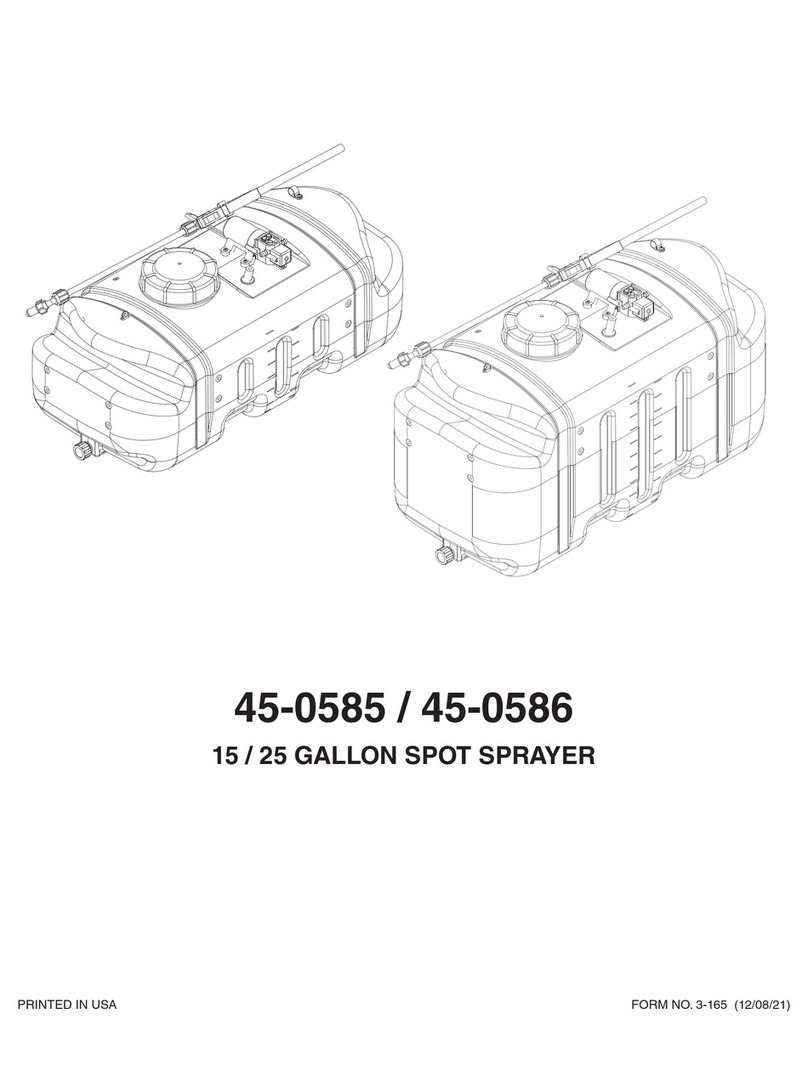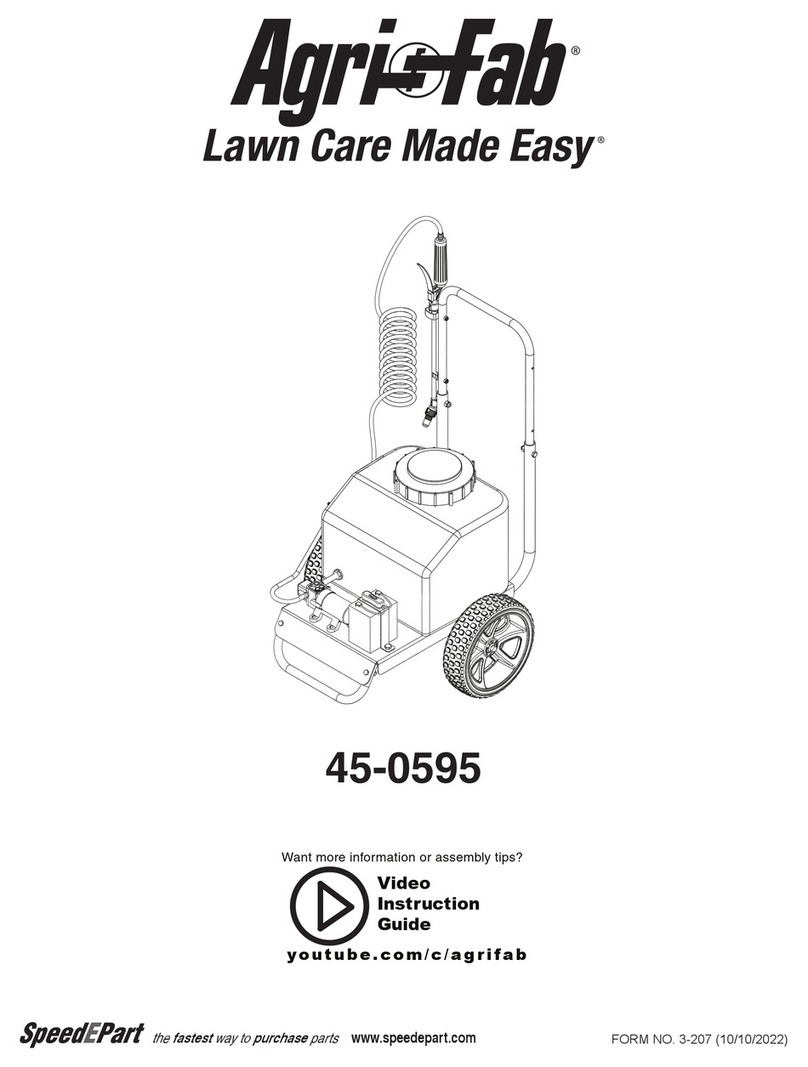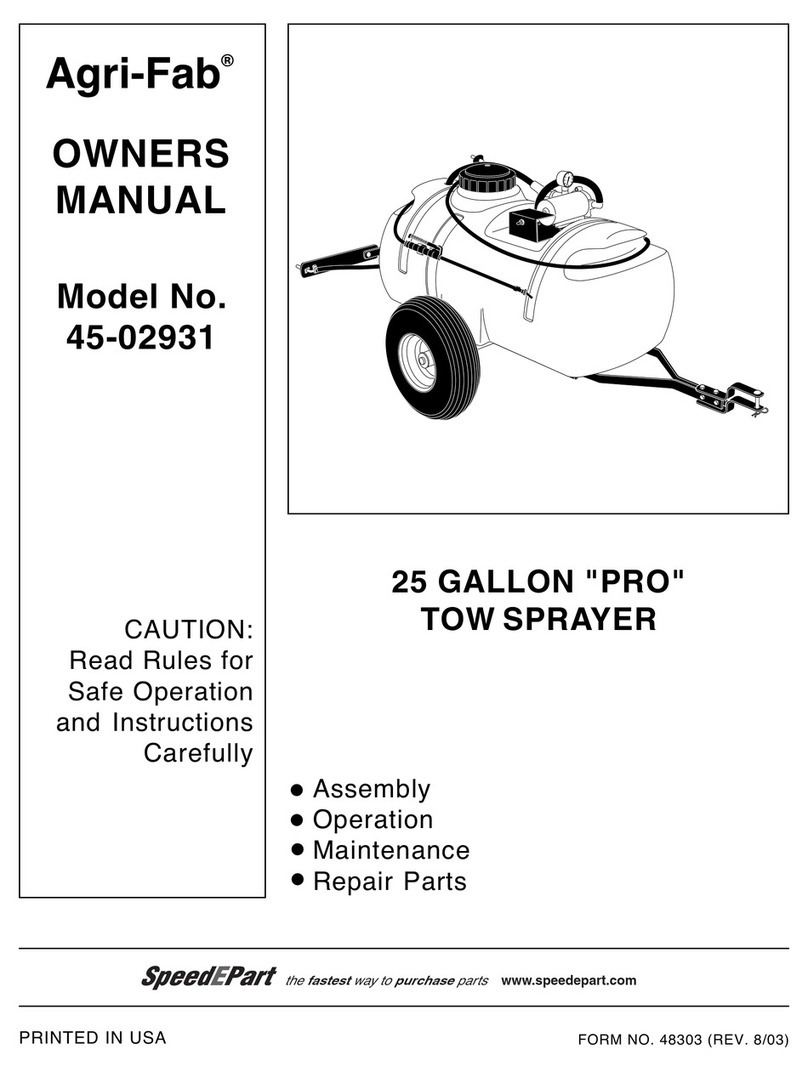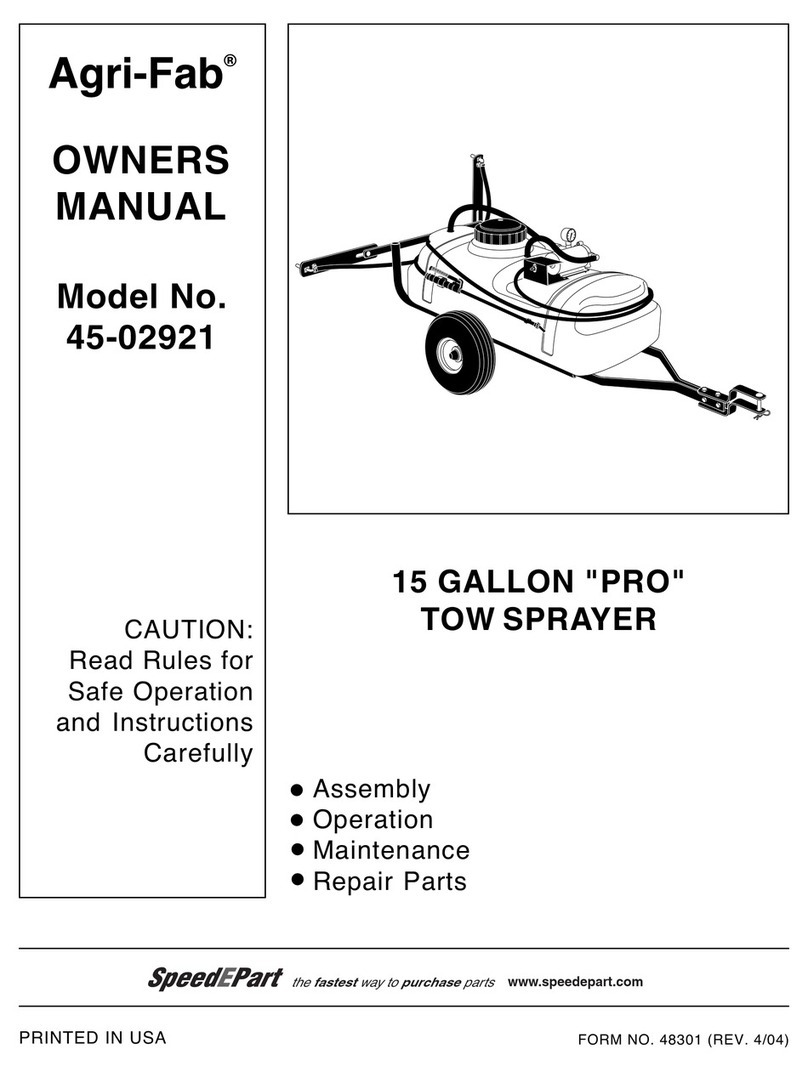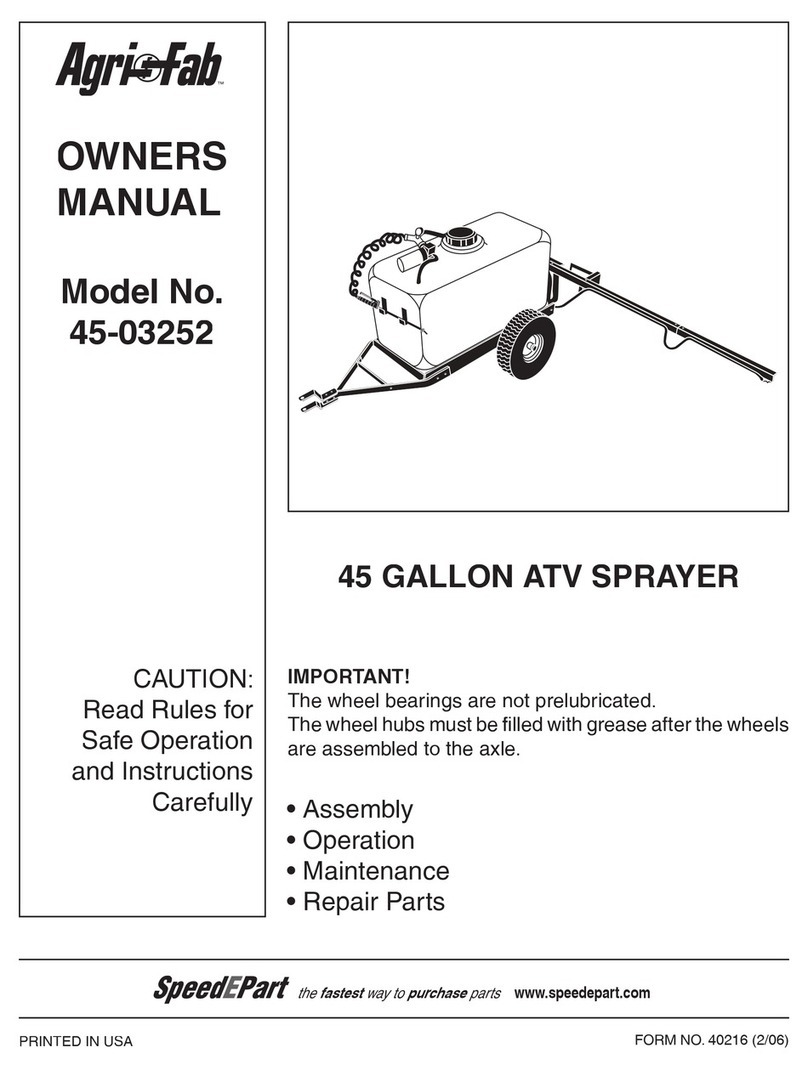
8
OPERATION
CAUTION: Connect to a 12 V battery only.
PUMP PRESSURE SWITCH
The pump pressure switch turns off the pump when it
reaches its maximum pressure setting. Very low ow
demand may cause the switch to rapidly cycle the pump
on and off. Rapid on and off cycling must be limited to
no more than 6 times per minute. Cycling could cause
the motor to heat beyond the recommended maximum
temperature and reduce the operational life of the pump
and pressure switch.
SPRAYER CONTROLS
Boom ON-OFF valve shuts off the ow to the boom
nozzles.
Recirculation valve adjust spray wand pressure and
recirculation of spray material to the tank.
Boom Valve Recirculation Valve
FIGURE 10
ADJUSTABLE SPRAY GUN NOZZLE
Twisting the nozzle will adjust the spray pattern from a
cone shaped mist to a solid stream.
BEFORE STARTING
1. Attach the sprayer to the tractor hitch.
2. Connect the wire harness from the switch to the
pump.
3. Check for leaks using plain water. Fix leaking ttings
with thread tape.
USING THE SPRAYER
CAUTION: Wear eye and hand protection and
protective clothing when handling and working with
lawn chemicals.
1. Determine the application rate (gallons per 1,000sq.
feet) based on the chemical manufacturers
recommendations.
2. Estimate the size of the area to be sprayed and the
amount of solution that will be needed. This can help
avoid unneeded solution left in the tank.
3. Refer to the application chart below to help determine
the speed required to achieve the manufacturers
recommended application rate.
4. Check spray tips. Tips should be aligned with boom
as shown. If necessary, loosen spray tip cap nut. Align
spray tip and tighten cap nut.
5. Test spray pattern with water on driveway or sidewalk.
Each spray tip pattern should spread out to the right
and left sides, rather than to the front and back of the
boom. There should be some spray overlap between
each tip and the spray patterns should be consistent.
6. Add the chemical solution to the tank, following the
manufacturers recommendations.
APPLICATION CHART
Sprayer Tip Size PSI GMP One Nozzle
15 Gallon TP11008VP 35 0.75
Sprayer Gallons per 1000 Sq. Ft.
2 mph 3 mph 4 mph 5 mph 6 mph
15 Gallon 74.3 50 37.2 29.7 24.75
